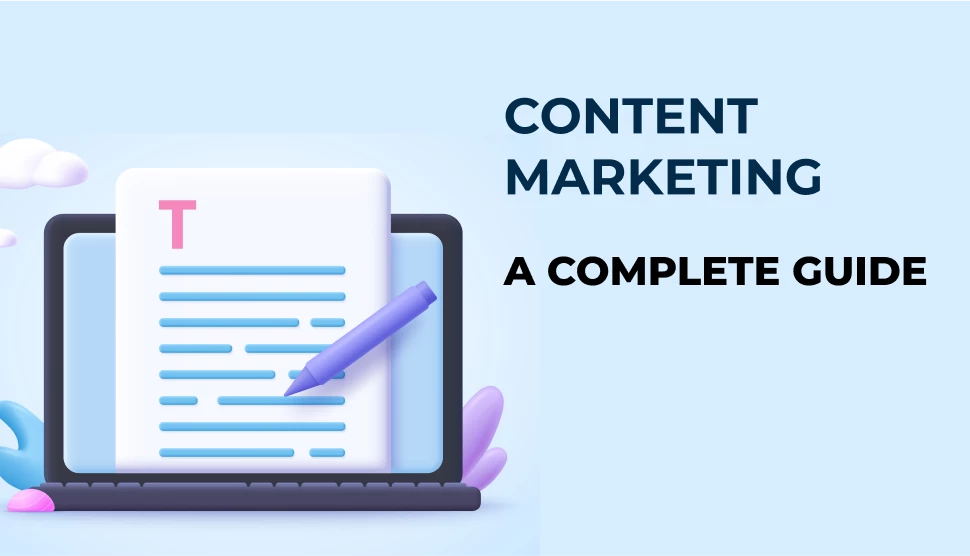Table of Contents
In this digital-first age, content is the fuel that drives brand interaction, customer loyalty, and growth online. Whatever your role – startup founder, veteran marketer, or business owner – this content marketing guide will assist you in creating a strategy that truly delivers in 2025.
Content marketing is not merely about blogging. It’s about producing quality, relevant content that is specific to attract, retain, and convert your target audience. Let’s break it down.
What is Content Marketing?
Content marketing is a content-driven marketing strategy centered on publishing high-quality, consistent content to attract and retain a well-defined audience — and ultimately drive profitable customer behavior.
Instead of selling your products or services, you’re offering information that informs and empowers your audience.
Why Content Marketing Matters in 2025
In 2025, consumers are more discerning than ever. They believe in value-based brands that inform, engage, and motivate. Here’s why content marketing is critical:
- Increases SEO performance
- Builds authority and trust
- Enhances customer engagement
- Sends qualified leads
- Augments other marketing channels (email, social, paid media)
Whether blog, video, podcast, or infographic — planned content drives conversions.
Step-by-Step Content Marketing Guide
Here’s a complete content marketing guide to get you started or upgrade your current plan.
1. Set Clear Content Goals
Define your goals before you produce content. What do you need your content to do?
- Drive website traffic?
- Get leads?
- Establish brand awareness?
- Boost SEO rankings?
Your goals will direct the whole content marketing process.
2. Understand Your Target Audience
Developing effective content needs thorough insight into your audience. Employ these techniques:
- Develop buyer personas: Include demographics, pain points, behaviors, and interests.
- Leverage analytics: Tools like Google Analytics and social insights provide real data.
- Listen on social media: Track trends and conversations to learn what matters to your audience.
3. Conduct Keyword Research
SEO is an integral part of any content marketing guide. Find out what your audience is searching for.
- Use tools like SEMrush, Ahrefs, Ubersuggest, or Google Keyword Planner.
- Focus on long-tail keywords to target specific queries.
- Naturally include your primary and secondary keywords.
Example: If your keyword is “content marketing guide,” use variations such as “how to do content marketing,” or “content marketing strategy 2025.”
4. Develop a Content Strategy
A strategy keeps your content efforts directed and trackable. Important elements are:
- Content calendar: Schedule when and where content will be published.
- Content formats: Blogs, videos, case studies, podcasts, infographics, ebooks.
- Publishing channels: Website, YouTube, Medium, LinkedIn, Instagram, Email.
- Team roles: Assign tasks — writers, editors, designers, etc.
5. Create High-Quality Content
Here’s where the magic occurs. Follow these golden rules of this content marketing guide:
- Write to your audience, not yourself
- Offer value — provide answers, solutions, insights
- Make it interesting — add visuals, headings, bullet points
- Be consistent in your tone and brand voice
- Add clear calls-to-action (CTAs)
Quality content is not just informative — it’s actionable and shareable.
6. Optimize for SEO
A good content marketing guide always encompasses SEO optimization tips:
- Employ the focus keyword in title, URL, headers, and body
- Insert meta tags and alt text for images
- Internal and external linking
- Enhance readability and loading speed
- Optimize for mobile
SEO makes your content accessible to the correct audience.
7. Distribute and Promote Content
Do not have your content lying around idle. Promote it effectively:
- Share on social media platforms
- Send through email newsletters
- Work with influencers and industry leaders
- Repurpose blog posts into videos, infographics, or social media posts
- Amplify high-performing content with paid ads
The ultimate guide to the best content marketing promotes omni-channel distribution.
8. Measure and Analyze Performance
Content marketing is never once-and-done. Monitor your performance with:
- Traffic sources
- Bounce rate
- Engagement metrics (likes, shares, comments)
- Conversion rates
- Keyword rankings
Monitor and optimize using tools like Google Analytics, Hotjar, or HubSpot.
9. Update and Repurpose Content
Good content is dynamic. Revise outdated blog articles with fresh statistics, trends, and graphics. Repurpose successful content in another form such as:
- Webinars based on blog series
- Podcasts based on video interviews
- Instagram carousels based on case studies
Smart repurposing maximizes time and increases ROI.
Top Tools for Content Marketing in 2025
Here’s a quick list of tools that every modern content marketer should know:
| Purpose | Tools |
|---|---|
| Keyword Research | Ahrefs, SEMrush, Ubersuggest |
| Content Writing | Grammarly, ChatGPT, Hemingway Editor |
| SEO Optimization | Yoast SEO, Surfer SEO |
| Graphic Design | Canva, Adobe Express |
| Scheduling | Buffer, Hootsuite, CoSchedule |
| Analytics | Google Analytics, Hotjar, HubSpot |
Biggest Content Marketing Trends in 2025
Stay ahead of the curve by embracing these trends:
- AI-powered content creation and personalization
- Interactive content like quizzes and polls
- Voice search optimization
- Short-form video (e.g., Instagram Reels, YouTube Shorts)
- Human-first, story-driven content
- Sustainability-focused messaging
Staying current ensures your content resonates with the 2025 audience.
Final Thoughts: Build with Value
This content marketing guide is more than just a checklist — it’s a mindset. Focus on delivering value to your audience. Content that educates, inspires, and connects will always outperform pushy sales tactics.
The brands that win in 2025 will be those who master authentic, consistent, and data-driven content strategies.

